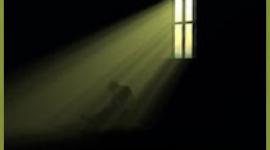Bipolar Symptoms in Children Mimic Other Psychiatric Disorders
 Even doctors have trouble differentiating bipolar disorder in children from ADHD and ODD. Here are specific bipolar symptoms to look for.
Even doctors have trouble differentiating bipolar disorder in children from ADHD and ODD. Here are specific bipolar symptoms to look for.
One of the biggest challenges has been to differentiate children with mania from those with attention deficit hyperactivity disorder (ADHD). Both groups of children present with irritability, hyperactivity and distractibility. So these symptoms are not useful for the diagnosis of mania because they also occur in ADHD. But, elated mood, grandiose behaviors, flight of ideas, decreased need for sleep and hypersexuality occur primarily in mania and are uncommon in ADHD. Below is a brief description of how to recognize these mania-specific symptoms in children.
- Elated children may laugh hysterically and act infectiously happy without any reason at home, school or in church. If someone who did not know them saw their behaviors, they would think the child was on his/her way to Disneyland. Parents and teachers often see this as "Jim Carey-like" behaviors.
- Grandiose behaviors are when children act as if the rules do not pertain to them. For example, they believe they are so smart that they can tell the teacher what to teach, tell other students what to learn and call the school principal to complain about teachers they do not like. Some children are convinced that they can do superhuman deeds (e.g., that they are Superman) without getting seriously hurt, e.g. "flying" out of windows.
- Flight of ideas is when children jump from topic to topic in rapid succession when they talk and not just when a special event has happened.
- Decreased need for sleep is manifested by children who sleep only 4-6 hours and are not tired the next day. These children may stay up playing on the computer and ordering things or rearranging furniture.
- Hypersexuality can occur in children with mania without any evidence of physical or sexual abuse. These children act flirtatious beyond their years, may try to touch the private areas of adults (including teachers), and use explicit sexual language.
In addition, it is most common for children with mania to have multiple cycles during the day from giddy, silly highs to morose, gloomy suicidal depressions. It is very important to recognize these depressed cycles because of the danger of suicide.
From Dr. Demitri Papolos, M.D. and his wife Janice Papolos, authors of the book "The Bipolar Child"
We have interviewed many parents who report that their children seemed different from birth, or that they noticed that something was wrong as early as 18 months. Their babies were often extremely difficult to settle, rarely slept, experienced separation anxiety, and seemed overly responsive to sensory stimulation.
In early childhood, the youngster may appear hyperactive, inattentive, fidgety, easily frustrated and prone to terrible temper tantrums (especially if the word "no" appears in the parental vocabulary). These explosions can go on for prolonged periods of time and the child can become quite aggressive or even violent. (Rarely does the child show this side to the outside world).
A child with bipolar disorder may be bossy, overbearing, extremely oppositional, and have difficulty making transitions. His or her mood can veer from morbid and hopeless to silly, giddy and goofy within very short periods of time. Some children experience social phobia, while others are extremely charismatic and and risk-taking.
If the child is fidgety and inattentive and hyperactive, isn't the correct diagnosis attention-deficit disorder with hyperactivity (ADHD)? Or, if the child is oppositional, wouldn't oppositional-defiant disorder (ODD) be the correct diagnosis?
Several studies have reported that over 80 percent of children who have early-onset bipolar disorder will meet full criteria for ADHD. It is possible that the disorders are co-morbid--appearing together--or that ADHD-like symptoms are a part of the bipolar picture. Also, the ADHD symptoms may simply appear first on the continuum of a developing disorder.
Children with bipolar disorder exhibit much more irritability, labile mood, grandiose behavior, and sleep disturbances-- often accompanied by night terrors (nightmares filled with gore and life-threatening content)--than do children with ADHD.
Because stimulant medications may exacerbate a bipolar disorder and induce an episode or negatively influence the cycling pattern of a bipolar disorder, bipolar disorder should be ruled out first, before a stimulant is prescribed.
Almost all the children in our study of 120 boys and girls diagnosed with bipolar disorder met criteria for oppositional defiant disorder (ODD). Again, the child should be evaluated for a possible bipolar disorder.
So how would a doctor diagnose early-onset bipolar disorder?
The family history is an important clue in the diagnostic process. If the family history reveals mood disorders or alcoholism coming down one or both sides of the family tree, red flags should appear in the mind of the diagnostician. The illness has a strong genetic component, although it can skip a generation.
Many parents are told that the diagnosis cannot be made until the child grows into the upper edges of adolescence--between 16 and 19 years old. The Diagnostic and Statistical Manual of Psychiatry--the DSM-IV--uses the same criteria to diagnose bipolar disorder in children as it does to diagnose the condition in adults, and requires that the manic and depressive episodes last a certain number of days or weeks. But as we already mentioned, the majority of bipolar children experience a much more chronic, irritable course, with many shifts of mood in a day, and often they will not meet the duration criteria of the DSM-IV.
The DSM needs to be updated to reflect what the illness looks like in childhood.
If a child hears voices or sees things, does that mean he or she is schizophrenic?
Absolutely not. Psychotic symptoms such as delusions (fixed, irrational beliefs) and hallucinations (seeing or hearing things not seen or heard by others) can occur during both phases of bipolar disorder. In fact, they are not uncommon. Sometimes the voices and visions are compelling; often they are threatening. Quite a few children report seeing bugs or snakes or say that they see and hear satanic figures.
next: Medication and Therapy for Treating Bipolar Disorder in Children
~ bipolar disorder library
~ all bipolar disorder articles
APA Reference
Staff, H.
(2008, October 13). Bipolar Symptoms in Children Mimic Other Psychiatric Disorders, HealthyPlace. Retrieved
on 2024, June 20 from https://www.healthyplace.com/bipolar-disorder/articles/bipolar-symptoms-in-children-mimic-other-psychiatric-disorders



